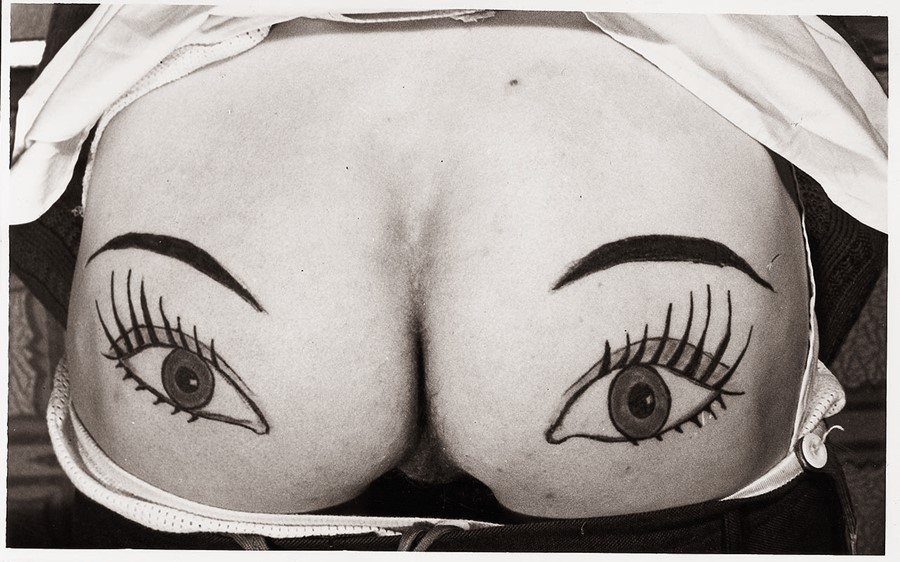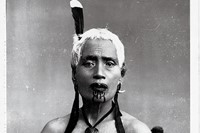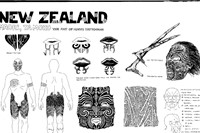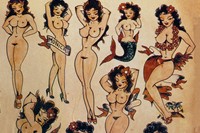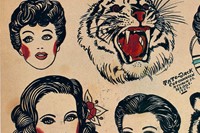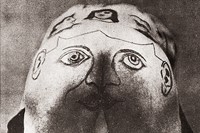Celebrating the rich history of tattoos
“There's something really the matter with most people who wear tattoos," Truman Capote once said. "There's at least some terrible story. I know from experience that there's always something terribly flawed about people who are tattooed, above some little something that Johnny had done in the Navy, even though that's a bad sign...It's terrible. Psychologically it's crazy. Most people who are tattooed, it's the sign of some feeling of inferiority, they're trying to establish some macho identification for themselves.” Karl Lagerfled is also not a fan: "I think tattoos are horrible. It's like living in a Pucci dress full-time."
But there are many who will strongly disagree with Capote and Lagerfeld, and there are countless examples of brilliant body art to cite. "I have a lot of tattoos," says Marc Jacobs whose include a cluster of stars, his two bull terriers Alfred and Daisy, Elizabeth Taylor as Martha from Who’s Afraid of Virginia Woolf? and SpongeBob SquarePants. "My first tattoo I had when I was a teenager was just a little heart. I am very friendly with a great artist, Scott Campbell, and I started going to him to get tattoos. I'm very spontaneous about what I get."
"I think tattoos are horrible. It's like living in a Pucci dress full-time" — Karl Lagerfeld
Patti Smith’s Crazy Horse-inspired lightning bolt was tattooed on her by Vali Myers, an Australian artist and one of her early heroes. Smith told Interview magazine in 1973, “Vali’s an Italian beatnik-witch and she was a big hero of mine when I was 14. She lived on the left bank, the supreme beatnik chick – thick red hair and big black eyes, black boatneck sweaters, and trench coats. Before Edie Sedgwick, she was my heroine. I had pictures of her all over my walls. I never considered her as a real person. Then I was confronted with the real girl, and I thought, ‘oh man, what am I gonna do,’ cause I had dealt with the image so long. She came over to me and we played all these, not really lesbian games, but like flirting with a boy in high school. When she tattooed me, it was painful. It looks like a little lightning bolt. My photos had become real, and I had to deal with that as a reality. It was a great turning point in my life, it had come full circle.”
George Orwell sported bright blue dots on his knuckles, Winston Churchill had an anchor on his forearm and there are rumours that Queen Victoria had a small tattoo in an undisclosed intimate location. Björk has two – a Vegvisir (an ancient Viking compass) on her left upper arm which she got as a teenager, and a small star behind her right ear. Model Cole Mohr is covered in them, many of which he and his friends have penned late at night, while Daria Werbowy has an inscription at the nape of her neck, an anchor alluding to her love of sailing, as well as other discreet symbols, on her fingers, and a snake on her foot. Many of photographer Niall O'Brien's tattoos are done by his close friend, the jeweller Duffy.
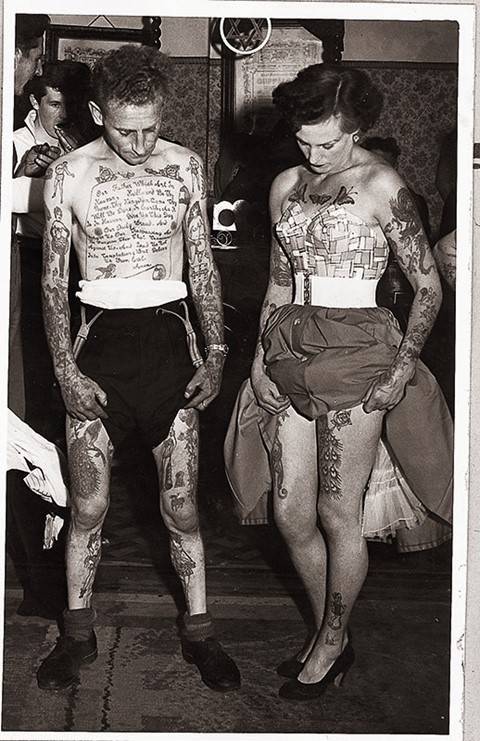
"I have a tattoo on my arm that I had done after dreaming about the same symbol every night for six months," Winona Ryder told AnOther Magazine in 2005. "I finally got up one morning and got the tattoo. I was sure I was going to regret it at some point, but I never have. It's two Cs interlinking in opposite directions. After I 'd had it done I found out it meant compassion, which is great, because that was the most important virtue instilled in me by my parents."
David Bowie has a tattoo on his left calf which depicts a dolphin and a Japanese variation of the Serenity prayer which the musician drew himself and was done in Japan in the early nineties. "In the majority of places in Japan it's still taboo to have tattoos, unless you're a member of the gangs, because it's so associated with criminality, that the only people who do really reasonable jobs are members of the fraternity," Bowie once told Dazed & Confused. "I had to search a guy out. It took me two weeks to be allowed to go and see him and then all his cohorts came up for a good laugh to see this Caucasian get himself tattooed." Carey Mulligan has a sketchy tattoo of a seagull on her wrist which makes reference to the Chekhov play in which she starred at the Royal Court. "I had it done at Selfridges," she told AnOther Magazine in 2012. "I didn’t feel like I was cool enough to go to a tattoo bar. They’d just laugh at me." Kate Moss had her tattoo done by the late artist Lucian Freud (who used to tattoo his fellow sailors when he was in the Merchant Navy in World War II) and at her birthday party earlier this year, Jake and Dinos Chapman gave tattoos to guests.
"I finally got up one morning and got the tattoo. I was sure I was going to regret it at some point, but I never have" — Winona Ryder
"Tattoos evoke a range of reactions – from interest, astonishment, admiration and reverence to constertation and abhorence", writes celebrated tattoist Henk Schiffmacher in his foreword of a glorious new book 1000 Tattoos. "They are met with frowns, their bearers are judged or misjudged, awaking fear or desire. A tattoo always raises questions, whether in the mind of a friend or foe, consciously or unconsciously, whether the person concerned is educated and generous or narrow-minded and short-sighted, approving or disapproving. These questions do not so much concern the technique but rather the meaning of the tattoo, the purpose it serves." Schiffmacher also discusses the reasons behind getting tattoos – from marking of occasions, as part of ceremonies or rituals, personal visions and statements, membership of a 'group' and light-hearted spontaneity.
The book traces the rich history of the art of tattooing, through a glorious selection of archive imagery, much of which is sourced from the Amsterdam Tattoo Museum, from 19th century engravings, tribal body art, twenties circus ladies, traditional sailor motifs and intricate Japanese designs. To celebrate, here we present our favourite examples, including cheeky bottom designs from the 18th century, a trompe l'oeil bra and members of the Bristol Tattooing Club in the fifties.
1000 Tattoos, published by Taschen, is on sale now.
Text by Laura Bradley
